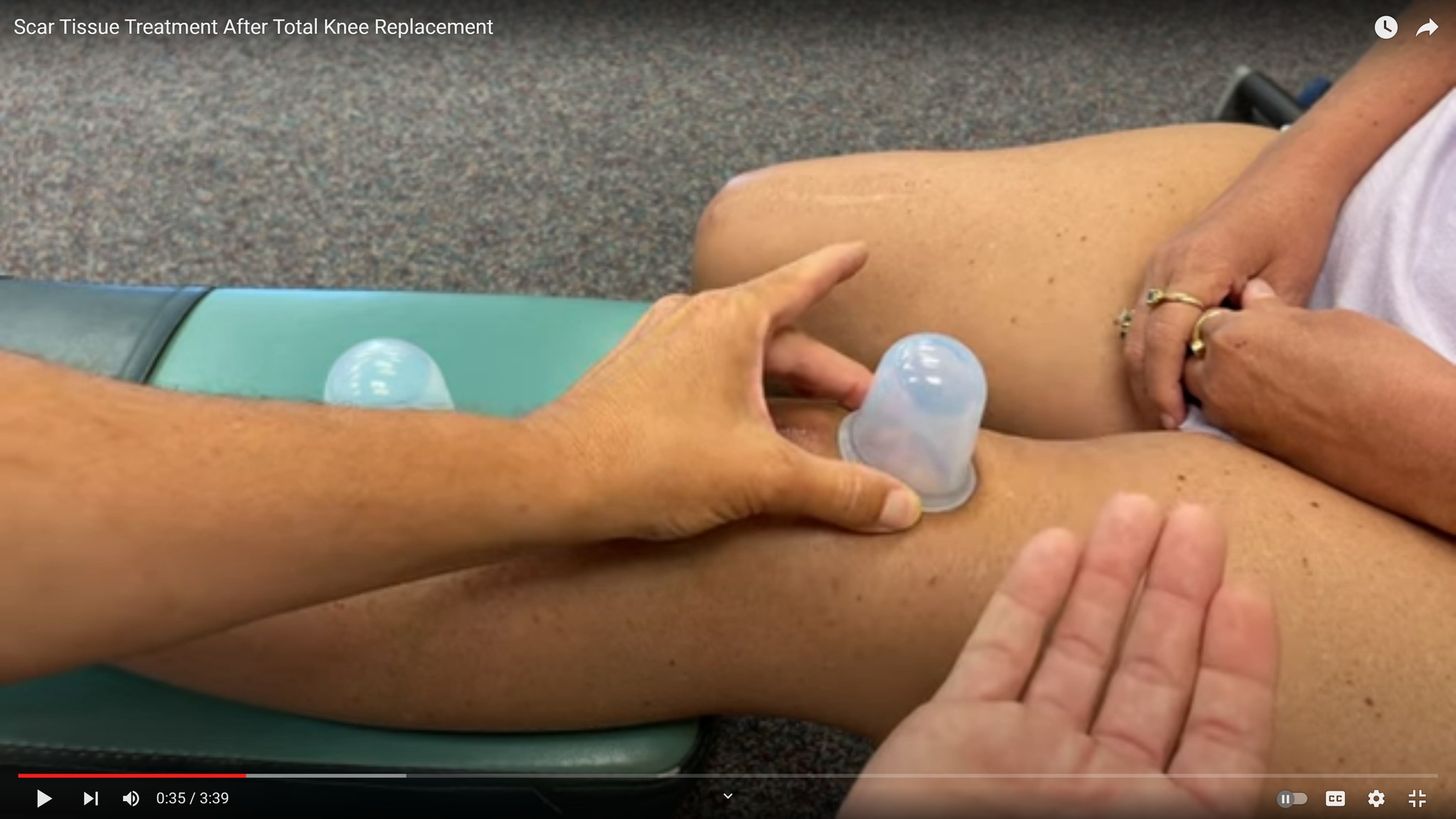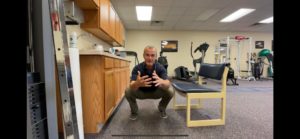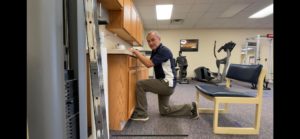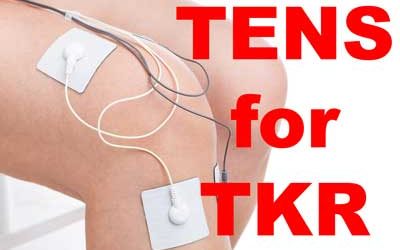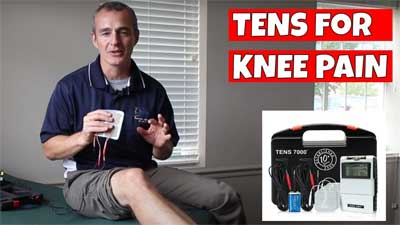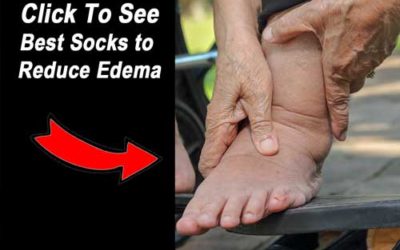3 Months After Total Knee Replacement
What to expect 3 months after total knee replacement
During the first 3 months after total knee replacement, you may experience lots of changes and rapid improvement. Range of motion will go from practically nothing to 120 degrees of flexion and 0 degrees of extension.
Your strength and function will be mostly back to normal and your balance and coordination will be significantly improved.
Stuff that used to be challenging like standing from the commode or taking a shower will be second nature again.
Remaining Deficits
Some activities and goals will still be a couple of months away. If you enjoy baths, it will still likely be challenging or even dangerous to get in and out of a standard bathtub.
Jogging and hiking may still be a ways off. Especially on gravel or other uneven surfaces.
Some people may still be experiencing pain and stiffness with activity or in the evening and a handful of clients may still be experiencing difficulty with sleep.
Stiffness: 3 Months After Total Knee Replacement
Stiffness in the knee at 3 months post-op is not uncommon. Many surgeons will say give it 12 months. The lymphatic system has been significantly affected by the procedure and as a result, the lymph fluid that would normally bring waste products away from the surgical site isn’t working effectively.
Inflammation is commonly blamed for redness and stiffness, but keep in mind that inflammation is a normal part of the healing process. If you don’t experience inflammation the tissue can not heal.
Managing inflammation at the 3-month mark is important. If you can walk 1 mile without increased swelling but 2 miles cause swelling and more pain, you should try 1.25 miles then 1.5 miles to determine your tolerance.
Movement and exercise should support the healing process and help to manage inflammation, not cause it to get worse.
No exercise is harmful and too much exercise is harmful. Your goal is to find the sweet spot in the middle.
Pain: 3 Months After Total Knee Replacement
Pain is another common report for many patients at the 3-month mark. Especially if they have been increasing their physical activity levels. Some patients will accumulate 10,000 steps in a day within 3-months and as a result, experience increased pain the next day.
But pain isn’t only associated with increased activity. Pain could also be attributed to the body’s ability to adapt to new bony alignments. Before your knee replacement, you likely had poor alignment through the hip, knee, and ankle. Now, with your new knee, your body will need to adapt to the new stresses being placed upon the existing bones and joints.
Some of the most common areas of pain include:
- The knee
- A vice grip sensation around the top of the shin
- Shin pain
- Calf pain
- Thigh pain
- IT Band Pain
- Pes Anserine Bursitis
- Ankle pain
Common Pain Management Techniques for Knee Pain
| Icing / Cryotherapy |
| Compression Wraps |
| Kinesiology Tape |
| Self Massage / Foam Roller |
| TENS or Electrical Stimulation |
Skin Pain
Occasionally there is significant sensitivity around the lower anterior portion of the knee. Even the lightest contact produces a pain response. Patients say that just the pressure of the bed sheets causes intense pain.
This Facebook Group member said:
“I thought I read about our scars being real sensitive like to pants or bed sheets. Someone commented that you can get some type of reusable strip to place over your scar that sticks so that you don’t have that sensitivity. Does anyone recall what I’m talking about?”
Another Facebook Group member said the following:

A great desensitization strategy is to use a washcloth to scour the region for 1 to 2 minutes a day.
In the clinic, we use a cupping technique to desensitize the area. If you click on the image below it will open a YouTube video showing you the technique.
Bone Pain
Pain in the shin bone is very common around three months after total knee replacement surgery. Patients are often walking more than before surgery and with the knee alignment of the hip, knee, and ankle, the shin bone is adapting to new forces.
This pain is described as deep aching pain. It might keep you up at night and gets worse with prolonged episodes of standing and walking. If you have ever had shin splints it might be similar to this.
The best treatment for this is time and managing how long you spend walking or standing. It is better to take short rest breaks throughout the day if possible. It might also help to improve ankle mobility with some of the exercises I will be sharing in the next section of this article.
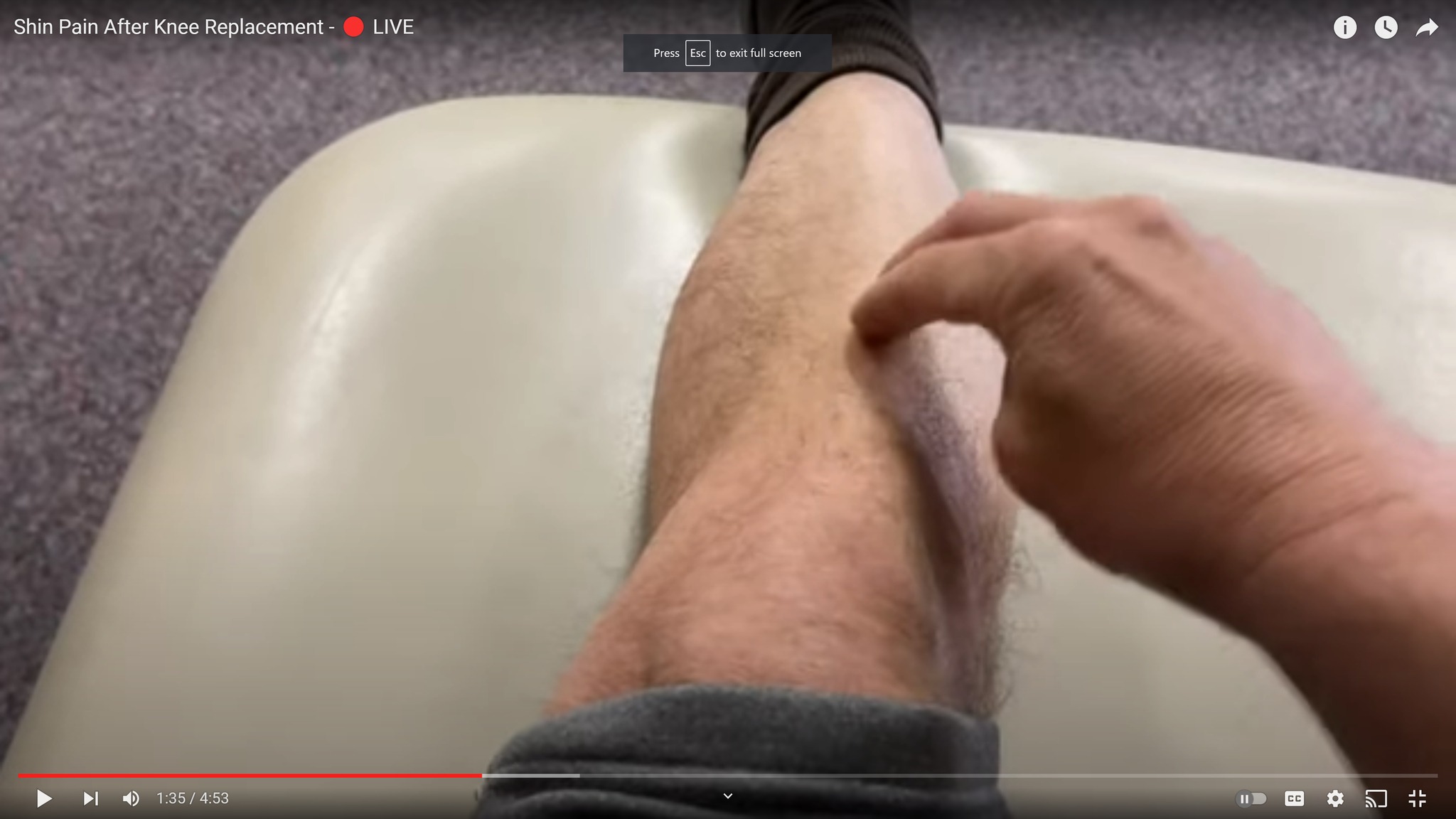
Exercises: 3 Months After Total Knee Replacement
By the time you reach 3 months after knee replacement, you are finished with post-surgical exercises like heel slides and ankle pumps.
Now you may progress into some of the more exciting exercises like squats and lunges.
Squats
A squat is simply a movement in which your hips are lowered from a standing position. Squatting is essential for transitioning from standing to sitting, for getting in or out of a car, and for crouching down to reach into a low cabinet.
In this video, I discuss three versions of a squat based on three phases of recovery.
| Squat Progression |
|
Sit to Stand from a Chair – This exercise is performed by starting in a standing position in front of a chair. You will control your descent to the chair until you reach a seated position, then you will return to standing in front of the chair. This is often performed for 3 to 5 repetitions twice a day. |
|
Unsupported Squat Holding On – This exercise is often performed in front of the kitchen sink. You would hold the kitchen sink for support while you sit on a chair positioned behind your body. You would then return to standing. This is often performed for 3 to 5 repetitions twice a day. |
|
Handsfree Unsupported Squat – In the image, you can see how I have positioned myself between the sink and a chair. I start in a standing position and slowly lower my hips to a controlled level within the surgical knee’s tolerance. I would then return to a standing position. This exercise is often repeated for 3 to 5 repetitions twice a day.
|
| Lunge Progression |
|
Stride Step – To perform this exercise I would stand parallel to my kitchen counter and focus on taking long steps forward and back. I would increase the distances between the forward heel and the back toe to between 12 and 24 inches. This is often performed for 10 repetitions on each side twice a day. |
|
Partial Lunge – To perform this exercise I would face the kitchen sink and step my surgical foot forward under the toe-kick of the cabinet. I would step my non-surgical foot back and lower my non-surgical knee toward the ground. This is often performed for 10 repetitions twice a day. |
|
Unsupported Lunge – To perform this exercise I would position myself near the kitchen sink with a chair to the opposite side. I would lunge with my non-surgical knee down first and if allowed by my surgeon I would lunge to the surgical knee down. I would place a pillow or cushion on the floor under the down knee as needed. This is often performed for 10 repetitions twice a day on each side.
|
Activities You May Be Able To Do 3 Months After Total Knee Replacement
PLEASE REMEMBER: Every patient is different. You will all progress at different rates and you will achieve functional goals at different times. Don’t compare your recovery to anyone else and don’t compare your recovery to this timeline.
- Walk up/down stairs with a step-over-step gait pattern
- Stand from a chair without the use of your hands
- Balance on your surgical leg for longer than 10-seconds
- Sleep through the night
- Get down and the floor and return to standing independently
- Walk more than 1 mile at your own pace
- Scoot, bridge, and roll in bed
- Bath and Dress independently
Summary and Key Points:
I have never seen two total knee replacements progress in the same manner. Even when it was done on the same person at the same time. Every person is unique and every total knee replacement surgery is unique.
These are estimates and averages. You may be farther ahead than you expected in some areas and farther behind in others.
Take your time. Embrace the challenges and celebrate the wins.
Can TENS Unit Cause Heart Attack
Unraveling the World of Can TENS Unit Cause Heart Attack? Transcutaneous Electrical Nerve Stimulation (TENS) units are specialized devices widely used in the medical and physical therapy fields. These handy gadgets function by sending low-voltage electrical currents...
TENS for Knee Pain
Table of Contents TENS Unit for Knee Pain Contraindications for using TENS on Knee Pain Indication for Using TENS on Knee Pain TENS Unit for Knee Pain Transcutaneous Electrical Nerve Stimulation (TENS) is a non-invasive and drug-free method for pain relief that is...
Is foot swelling after knee surgery normal?
Foot swelling after total knee replacement surgery is a common concern among patients. This comprehensive guide will explore the causes of swelling, how to manage and reduce it, and steps to prevent it from occurring. Read on to learn more about foot swelling after total...
